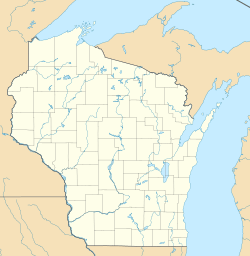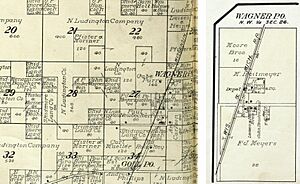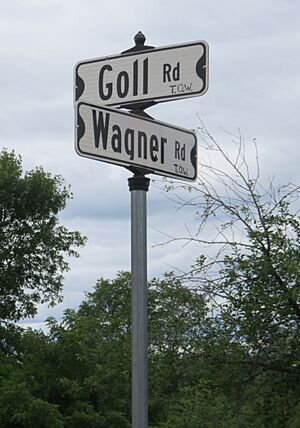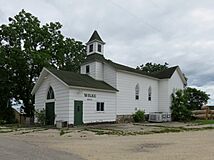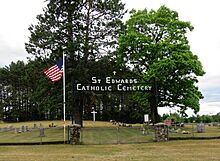Wagner (community), Wisconsin facts for kids
Quick facts for kids
Wagner, Wisconsin
|
|
|---|---|
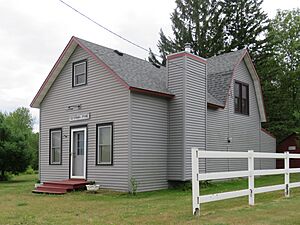
Old Karara Store, the former general store in Wagner
|
|
| Country | |
| State | |
| County | Marinette |
| Elevation | 214 m (702 ft) |
| Time zone | UTC-6 (Central (CST)) |
| • Summer (DST) | UTC-5 (CDT) |
| Area code(s) | 715 & 534 |
| GNIS feature ID | 1577871 |
Wagner is a small place in Marinette County, Wisconsin, in the United States. It's called an unincorporated community, which means it's a settlement that doesn't have its own local government like a city or a village. Instead, it's part of a larger area called a "town." Wagner is located about 11.5 miles (18.5 km) east-southeast of a town called Wausaukee.
Contents
Where is Wagner Located?
Wagner is found where two roads meet: Old Rail Road (which used to be called Right of Way Road) and Wagner Road. It sits at an elevation of 702 feet (214 meters) above sea level. You can reach Wagner by road from nearby places like McAllister to the north, Goll to the south, and Wisconsin Highway 180 to the east.
How Did Wagner Get Its Name?
The community of Wagner is named after an early settler, Joseph Wagner (1850–1925). He was born in Austria and moved to the United States in 1865. Joseph first lived in Chicago before moving to Mankato, Minnesota. There, he met and married Susan Dauffenbach (1860–1941).
Later, Joseph and Susan moved to the area that is now Wagner. Joseph Wagner was the first white settler to build a home there. He worked at sawmills in a nearby place called Wallace, Michigan. The road that goes through the community, Wagner Road, is also named after him.
A Look at Wagner's Past
Wagner grew slowly as people from different countries moved there. These included immigrants from Sweden, France (French-Canadians), Germany, the Netherlands (Dutch), Poland, and the Czech Republic.
In the past, Wagner was a busy place. It had a train station, two small hotels, a factory that made cheese, and mills that cut wood and made shingles. There was also a dance hall, places to eat and drink (taverns), and a general store where people could buy many things. A schoolhouse for the nearby Goll area was located just south of Wagner.
In 1908, a big fire destroyed many buildings west of the railroad tracks, including the mills. After this fire, the community stopped growing as much. Wagner was a stop on the Wisconsin & Michigan (W. & M.) Railway line. This train line connected places like Bagley Junction to Iron Mountain. However, the train service through Wagner ended in 1938 when the tracks were removed. Wagner also had its own post office from 1897 until 1934.
The Church in Wagner
Before a church was built in Wagner, religious services were held in people's homes. Father Joseph Hemmer started holding masses in the 1890s. Later, Father Joseph John Fox regularly led services at the Bernardy family's home.
In 1905, a group of church members dedicated to Saint Cecilia was formed. They continued to hold masses in different homes around Wagner. Land for a church building was bought in 1917. A donation of $500 was given in memory of Edward M. Dougherty. Because of this gift, the community decided to name the new church after Saint Edward the Confessor in 1918.
This church was a "mission church," which means it was a smaller church connected to a main parish church in Walsh. The building itself was made by moving and joining two old taverns together! The main and side altars, along with other church items, were brought from the old church in Walsh.
In 1922, land was purchased for a cemetery next to the church. The church building was moved further from the road in 1924, and a basement was added at that time. Electricity was installed in 1948. A new altar for the church was built by Gene Rolkosky in 1966. Sadly, the church was closed and the property was sold in 2004.


